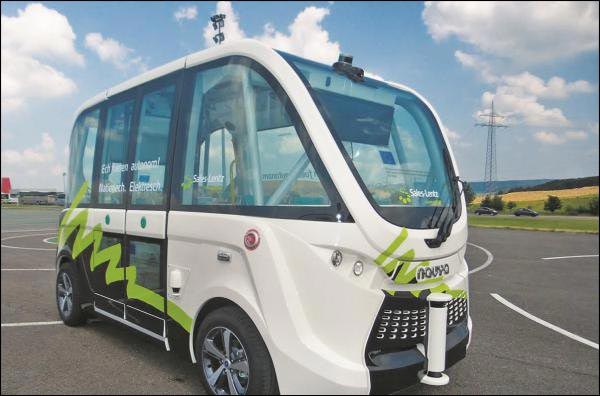
Self-driving vehicles: utopia or reality?
Following the example of other European cities, Luxembourg City in the Grand Duchy of Luxembourg has embraced a self-driving bus system. Since September 2018, two shuttles have been in circulation without the need for a driver, connecting the Pfaffenthal lift
to the funicular railway station below Kirchberg. The journey covers a distance of 1.4 km on a round trip. There are three stops. Inside the shuttle, passengers can use a touch pad to choose where to stop
on the pre-programmed route, just like in an elevator.
The “Autonom Shuttle” vehicles are manufactured by Lyon-based company Navya. The shuttles can accommodate up to fourteen passengers on board.
These fully autonomous and electric high-tech shuttles emit no greenhouse gases, hydrocarbons or exhaust gases. In addition to the environmental benefits, these shuttles are more comfortable for passengers due to the reduced
noise. Self-driving shuttles offer many advantages: they can run all night, according to demand, and have a range of around eight hours under normal operating conditions.

Shuttles are an innovative and bold transport solution that make optimal use of new driverless mobility technology. The shuttles, equipped with radars and sensors, cameras and technology of all kinds, travel at a speed of 20 km
; the next step will be 25 km/h, then 30 km/h, up to 40 km/h. They are controlled by software, programmes and algorithms: perception (vehicle location and obstacle detection), decision-making (route and direction planning)
and action (implementing decisions).
Self-driving vehicle manufacturers have set themselves a target of level-5 autonomy in the medium term: this degree of autonomy requires a system with full and permanent autonomous driving capabilities, where humans do not intervene at any time,
apart from indicating where they are going and allowing themselves to be transported. This level is set apart by “machine certainty”, a concept where the system will not execute an order from a human if it is considered abnormal, irresponsible or dangerous,
or will take the initiative based on measurements from its sensors. In some cases, automotive systems may perform manoeuvres that were not requested by the driver, or even refuse to perform a manoeuvre thus endangering
the vehicle or its passengers (for example, opening the door on a highway).
The general consensus is that driverless vehicles will reach level-5 autonomy within the next 5 years.



